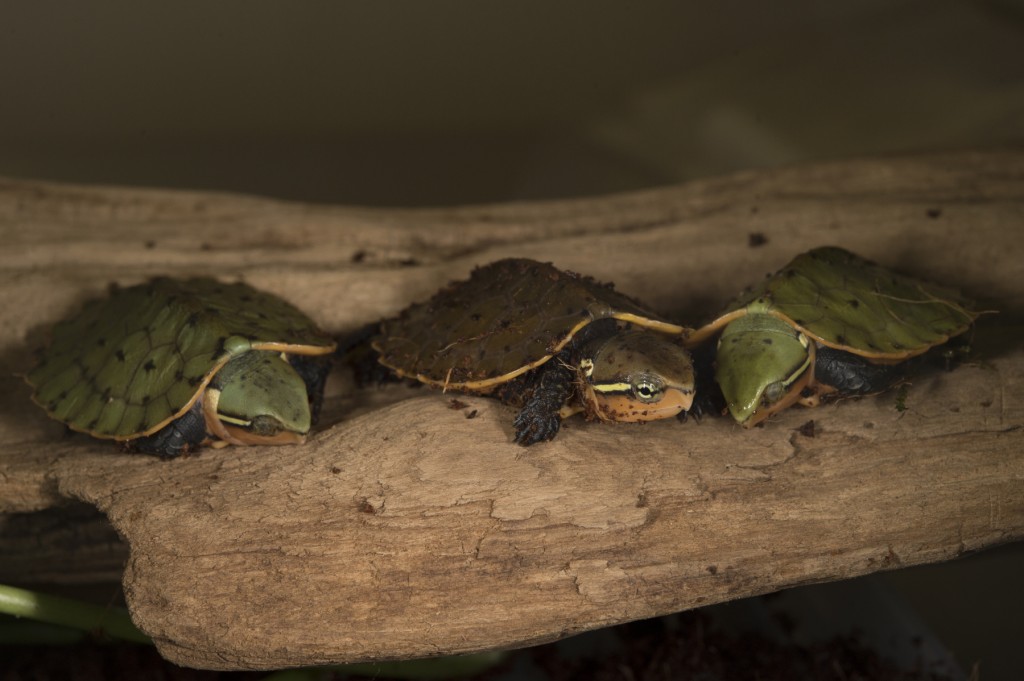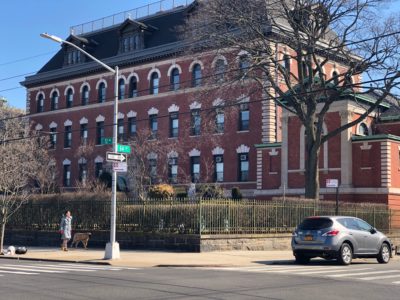Three Chinese big-headed turtles known as Platysternon megacephalum have recently hatched at the Wildlife Conservation Society Prospect Park Zoo.
The clutch hatched in November and represents the second time the species has reproduced at the zoo. The Prospect Park Zoo is the only facility accredited by the Association of Zoos and Aquariums (AZA) to successfully breed this species.
The Chinese big-headed turtle can grow to be about seven inches in length. Its skull is so large that its head cannot be withdrawn into its shell for protection.
The Prospect Park Zoo is breeding this species as part of WCS’s global effort to save critically endangered turtles from extinction. The strategy draws on all of the resources and expertise across the organization – including WCS’s four zoos and aquarium, Wildlife and Zoological Health Programs, and Global Conservation Programs – to take direct responsibility for the continued survival of some of the world’s most endangered tortoises and freshwater turtles.
“This second successful clutch proves this program is headed in the right direction,” said Jim Breheny, WCS Executive Vice President of Zoos and Aquarium and Bronx Zoo Director. “Our work on breeding endangered turtles taps the expertise found throughout the entire WCS organization as well as the partner organizations and agencies with whom we work.”
WCS now has 18 Chinese big-headed turtles. The hatchlings and most adults are housed in off-exhibit areas of the zoo, but one adult female is on exhibit in the Hall of Animals at the Prospect Park Zoo.
WCS is breeding Chinese big-headed turtles and other endangered turtle species to build assurance colonies with the purpose of maintaining a genetically viable population until conservationists are able to stabilize wild populations. The development of assurance colonies, along with work in nature, is part of WCS’s widespread conservation effort to save turtles.
Chinese big-headed turtles are native to China, Cambodia, Laos, Myanmar, Thailand and Vietnam. The species is classified as Endangered by the International Union for the Conservation of Nature (IUCN). Their population is declining due to trade demand across its Asian range countries.
Complex husbandry techniques were fine tuned at the Prospect Park Zoo to promote breeding and successful incubation of the eggs. Before the breeding season, adults were isolated and placed in enclosures with environmental conditions that mimic the annual environmental cycles they would experience in the wild. These environmental cycles are important critically important for successful reproduction in this species. Room temperatures and lighting are adjusted depending on the time of year – colder and darker in the fall and winter, warmer and lighter in the spring and summer. During their “winter” the turtles hibernate. After awaking, males are introduced to females for breeding.
Said Denise McClean, Director of the WCS Prospect Park Zoo: “Our staff has carefully researched and documented all of the science involved in this successful propagation program which will enable us to apply what we have learned to expand breeding programs and inform conservation work in the field.”
There are approximately 330 species of freshwater turtles and tortoises, half of which are threatened with extinction due to illegal trade and habitat loss. WCS strives to alleviate threats to highly endangered turtles around the world by working closely with relevant governments to react rapidly in nations that are centers of turtle diversity, including the big-headed turtle’s native range.



 Not in our backyard! Dyker rallies to prevent ‘out of character’ nine-story building from being built
Not in our backyard! Dyker rallies to prevent ‘out of character’ nine-story building from being built  Housing going up at Angel Guardian Home site: School also slated to be built at location
Housing going up at Angel Guardian Home site: School also slated to be built at location